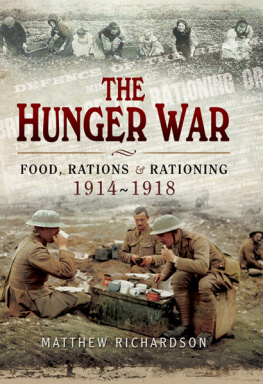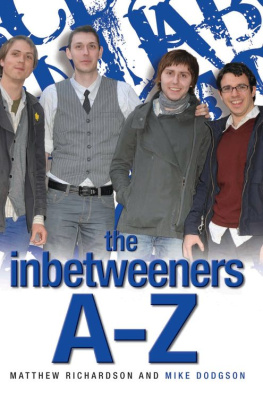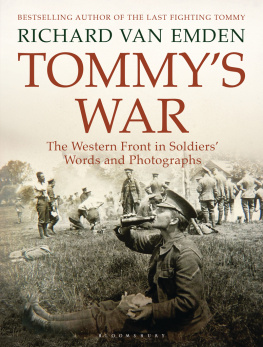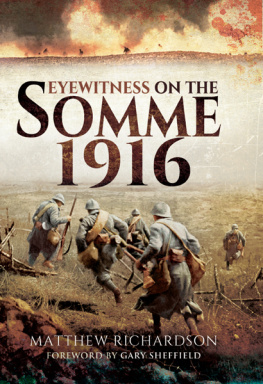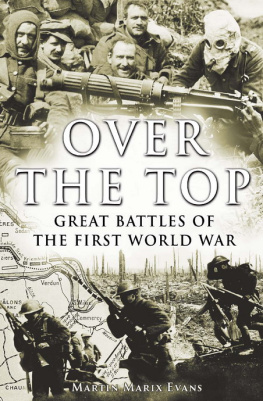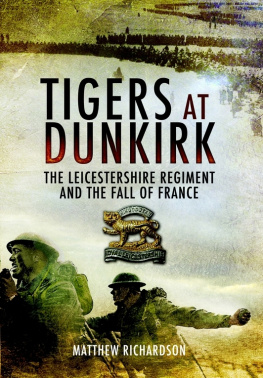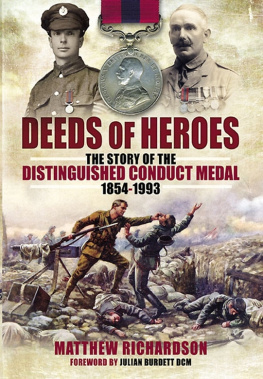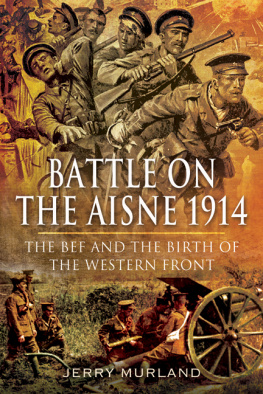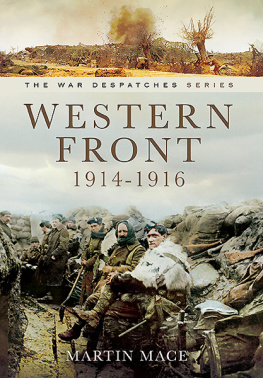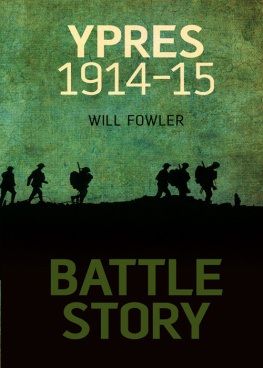First published in Great Britain in 2013
and reprinted in 2014 by
PEN & SWORD MILITARY
An imprint of
Pen & Sword Books Ltd
47 Church Street
Barnsley, South Yorkshire
S70 2AS
Copyright Matthew Richardson 2013, 2014
HARDBACK ISBN: 978 1 84884 777 4
PDF ISBN: 978 1 47383 126 1
EPUB ISBN: 978 1 47382 649 6
PRC ISBN: 978 1 47382 693 9
The right of Matthew Richardson to be identified as Author
of this work has been asserted by him in accordance with the
Copyright, Designs and Patents Act 1988.
A CIP catalogue record for this book is
available from the British Library
All rights reserved. No part of this book may be reproduced or
transmitted in any form or by any means, electronic or mechanical
including photocopying, recording or by any information storage and
retrieval system, without permission from the Publisher in writing.
Typeset in 10/12 Ehrhardt by
Concept, Huddersfield, West Yorkshire
Printed and bound in England by
CPI Group (UK) Ltd, Croydon, CRO 4YY
Pen & Sword Books Ltd incorporates the Imprints of Aviation, Atlas,
Family History, Fiction, Maritime, Military, Discovery, Politics, History,
Archaeology, Select, Wharncliffe Local History, Wharncliffe True Crime,
Military Classics, Wharncliffe Transport, Leo Cooper, The Praetorian Press,
Remember When, Seaforth Publishing and Frontline Publishing
For a complete list of Pen & Sword titles please contact
PEN & SWORD BOOKS LIMITED
47 Church Street, Barnsley, South Yorkshire, S70 2AS, England
E-mail:
Website: www.pen-and-sword.co.uk
Contents
by Dr Peter H. Liddle F.R.Hist. S
Dedicated to the memory of
Pat Gariepy
A true friend
Foreword
This a book for which many have been waiting and all who read will relish. It is almost four decades since several authors made attempts to draw in evidence convincingly to recreate the nature and actuality of the successive fighting dramas of British and German units engaged in action in Belgium and then France at the commencement of what was to become the Great War. In such books it was understandable that the experience of the infantry predominated. This was not always the case as there were volumes where cavalry clashes or horse artillerymen in imminent peril had their story told too, but this time we have sappers and then dispatch riders (a terrific section here), men in supply units attempting to maintain their essential work in constantly changing circumstances, even airmen searching for information on enemy movement and thus vital advantage. Men using the sabre or the carbine; serving the light field gun with its limbers and team of horses; the use of the spade or the explosive charge, men employing horse, mule or motor vehicle transport, they are all here. What vision, overall comprehension and thoroughness are displayed in this book.
It is however something else which distinguishes this book most significantly from its predecessors. It answers the questions so consistently ignored hitherto: where were the Germans, what were they doing, feeling, thinking, what was it like to be among them? Previously when they have appeared it was from a small number of familiar sources as if lip service were being paid to a quite reasonable adaptation of the tango truism If it takes two to dance, then it certainly takes two to make a fight, and so Ive got to say something about the other side. Matthew Richardson says far more than just something about the other side. We have on occasion after occasion, men from both sides, reporting in diaries and letters, or later recalling, facing each other in desperate encounters on the same day and in the same place. This is an exceptionally skilled retelling of the story of the British Expeditionary Forces encounters with its enemy, from Mons to Ypres in 1914, and with the justifiable addition of the extraordinary events of the Christmas Truce.
The author conveys superbly the sense of time, place, movement, change in circumstance and fortune. We are thus made excitingly aware from graphic evidence that the individual diarist may or may not have known that his words capture an epic moment in the sway of battle, but in every instance they illustrate how the previous hours had been imprinted on his conscience.
Mindful of the limited vision of the man in the ranks and his immediate commanding officer, it is never the less remarkable to see glimpses of overall fortune being recorded by men in the forefront of battle in these especially distinctive months. The months were distinctive because the nature of the war was being transformed as the best endeavours of the men fighting it were being frustrated. They were trying to wrest swift decisive victory from the inexorable reality of equally matched great industrial powers locked into a clinch, shorn, even bereft, of the hope of surprise.
Many years ago I had the pleasure of meeting some of the men who appear in this book. This was through work to rescue personal experience evidence from those who lived through the years of the First World War. The impression they made was such that even today I can clearly see some of their faces, hear their voices, and remember their handwriting. Perhaps this made me note with understanding a striking absence of any substantial evidence in this fine book of men in the ranks displaying apprehension, fear, anxiety, what we today gather together under the words combat stress. This made me mindful of my inexperienced questioning of an Old Contemptible named Dick Chant. Dismissively he dealt with my expectation of hearing from him about such sensitivities. His answer can be summarised in an almost impatient: Dont you realise we were pre-war regulars?
The war was drawing into its mangle a wider range of human fabric than solely that of the pre-war regular soldier, and accordingly it would wring out a richer kaleidoscope of reactions from that recorded by Chant. However, to say the very least, the soldiering experience of 1914, like that from August 1918 to the end of the war, somehow gets subsumed into a general perception of the stagnation of the Western Front. This book makes a splendid contribution towards eradicating any such false assumptions about the opening months of the conflict in Northern France and Belgium. The authors understanding of the war ensures that a fascinating, incompletely told story is handled with comprehensive expertise this is a book from which to learn, a book to savour and certainly a book to keep.
Dr Peter H. Liddle F.R.Hist.S.
Founder and formerly Keeper
Liddle Collection of First World War Archive Materials
Brotherton Library
University of Leeds
2013
Acknowledgements
No book of this nature would be possible without the assistance of a great number of people, all of whom either share my interests or who are experts in their own particular field. I would especially like to thank Richard Davies of the University of Leeds, who helped me to source material within the Liddle Collection at the Brotherton Library, my dear friend the late Patrick Gariepy, who so generously shared photographs from his own collection, Jean Prendergast who assisted with Irish sources, and Walter Lyneel of Belgium who also willingly offered copies from his photographic collection. Ralph Whitehead, a highly respected authority on German sources, was a tremendous help in that area, and Kathleen Smith who provided a great deal of material (both photographic and anecdotal) about her fathers wartime experiences. Mike Wood of Leeds, Barney Mattingly, Andy Horton, Alan Clare, Andrew Marsh, Neil Thornton, Gary Bentley, Robert Cull, Emily Ford and Bill Snelling all offered valuable information. Jori Wiegmans and Andrew Macdonald captured original photographs for the book, and I am enormously indebted to both for their invaluable assistance. My thanks in regard to the colour plates also extend to Sarah Stevenson at the Fusiliers Museum, Bury, together with Mike Hesp, Philip French, Peter Weedon, Scott Marchand, Paul Biddle and Jack Alexander. (Unless otherwise stated, all photographs within the book are from the authors collection.)
Next page

